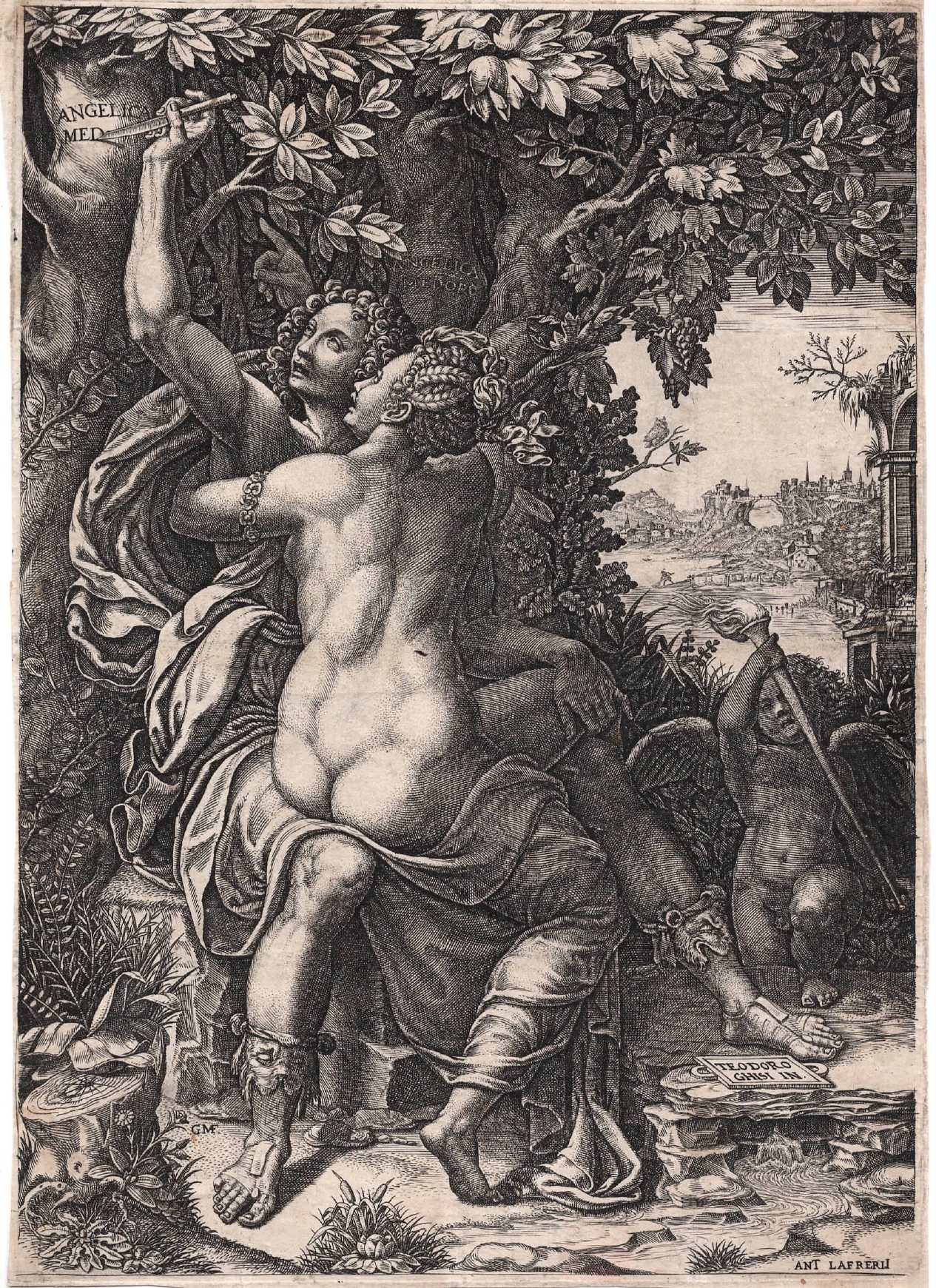Project Description
Giorgio Ghisi
(Mantova 1520 – Mantova 1582)
Angelica e Medoro. 1570 ca.
Bulino
misure: mm 295×208 (lastra) mm 298×212 (foglio)
Citato nei documenti storici anche come Giorgio Mantovano, è tra i più importanti incisori italiani. Viaggiò molto e, seppur non esista alcuna notizia certa, pare che si sia formato sotto l’influenza di Giulio Romano. Ma è Giovan Battista Scultori, pittore manierista e incisore, anch’egli formatosi sotto la guida di Giulio Romano, a indirizzarlo verso l’attività incisoria. Dopo aver presentato le sue lastre ad Antonio Lafreri pubblica con lui la Morte di Procri e i rami tratti dallo Scultori. È documentato anche ad Anversa dove collabora con l’editore Hieronymus Cock che lo porterà a conoscere i maggiori artisti d’oltralpe. Del 1561 è il bulino Sogno di Raffaello, considerato il suo capolavoro.
L’incisione proviene da un’opera perduta del fratello Teodoro Ghisi, un tempo conservata in una collezione privata di Amsterdam, e nasce molto probabilmente in concomitanza con Venere e Adone (Bartsch, 42). L’illustrazione, tratta da una scena descritta nell’Orlando furioso di Ludovico Ariosto (canto XIX, ottave 33-37, canto XXIII, ottave 102-103) mostra la bella Angelica innamorata di Medoro mentre scrive sulla corteccia dell’albero i loro nomi. Ogni dettaglio è realizzato con estrema cura, il chiaroscuro è vibrante con contrasti nitidi. Nel foglio in basso a sinistra è visibile la sigla “GMAF” con le due ultime lettere sovrapposte, a destra si trova invece il cartiglio con “Teodoro/ghisi in.” e sotto l’indirizzo del Lafreri (1512 -1577).
L’impressione è ottima, II stato su IV, con l’indirizzo di Antonio Lafreri. I margini sono sottili su tre lati mentre sul lato sinistro il foglio risulta rifilato. Carta con filigrana “agnello pasquale con stendardo in cerchio singolo” (Briquet 50 – Roma 1535-64). Ottimo stato di conservazione.
Bibliografia: A.v. Bartsch, Peintres ou dessinateurs italiens. Maitres du dix-septième siècles (troisième partie), v. XV, Leipzig 1870, p. 410 n. 62; Boorsch, J. Spike, Italian Artists of the Sixteenth Century, v. XXXI, New York 1986, p. 135 n.62; L’opera incisa di Giorgio Ghisi, a cura di P. Bellini, Bassano del Grappa 1998, pp. 147-149 n.32 The engravings of Giorgio Ghisi (catal.), a cura di M. Lewis – R.E. Lewis, con introduzione di S. Boorsch, The Metropolitan Museum of Art, New York 1985, pp. 149-150 n. 43
VENDUTO
